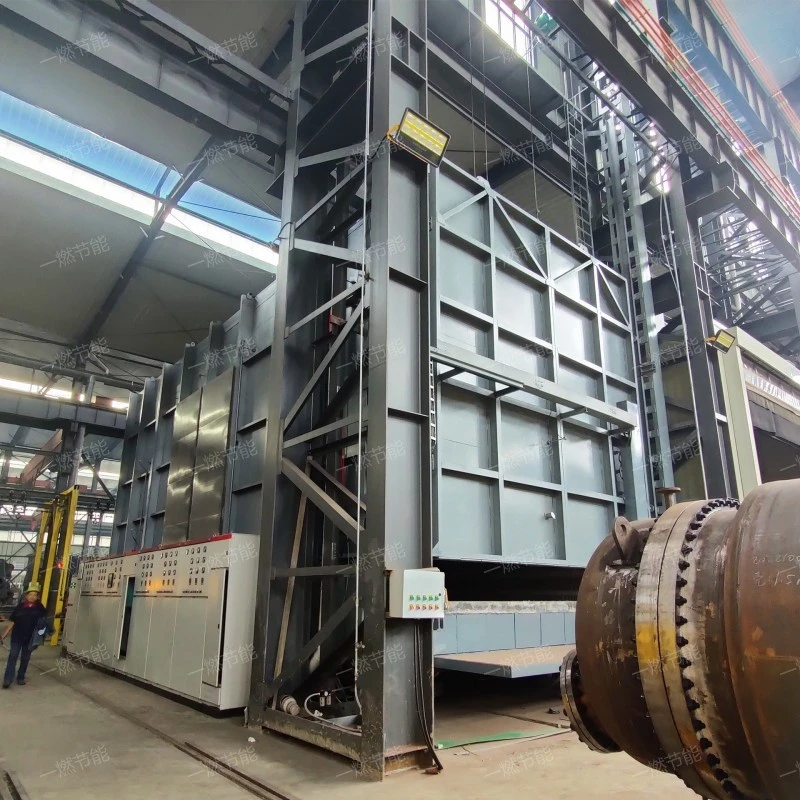Introduction to Catalytic reduction low-temperature denitrification, introduction to SCR denitration advantages and characteristics
Catalytic reduction low-temperature denitrificationis an efficient, stable and environment-friendly flue gas denitrification technology.,the product looks atmospheric.,at work,Catalysts are used to promote the selective catalytic reduction reaction between reducing agents (such as ammonia and urea) and NOx in flue gas. Under the action of catalyst, the reductant preferentially reacts with NOx to generate harmless nitrogen and water vapor, but hardly reacts with oxygen in flue gas. This chemical reaction is usually carried out in the temperature range of 200-450℃, and the specific reaction temperature depends on the type of catalyst selected.。The following is to introduce the Catalytic reduction low-temperature denitrification:
1、Brief introduction of Catalytic reduction low-temperature denitrification
Catalytic reduction low-temperature denitrificationis an efficient, stable and environment-friendly flue gas denitrification technology.。

Catalytic reduction low-temperature denitrification
2、Introduction of advantages of Catalytic reduction low-temperature denitrification
Catalytic reduction low-temperature denitrifications have the following advantages.
- Mature and stable technology
- Environmental friendliness
- Intelligent control and convenience of operation
- High efficiency denitration capacity
- Intelligent control and convenience of operation
Catalytic reduction low-temperature denitrification technology has been developed and applied for many years, and the technology is mature and stable. The Catalytic reduction low-temperature denitrification has high reliability and stability, and can maintain stable denitrification efficiency under various working conditions. In addition, the Catalytic reduction low-temperature denitrification technology has good adaptability and adjustability, and can be adjusted and optimized according to different flue gas components and emission requirements.
The by-products produced by Catalytic reduction low-temperature denitrification technology are mainly nitrogen and water vapor, which are harmless to the environment and will not cause secondary pollution. Compared with the traditional wet flue gas denitrification technology, the Catalytic reduction low-temperature denitrification technology does not need to use a lot of water resources and will not produce pollutants such as wastewater, which is more in line with the requirements of environmental protection and sustainable development.
The Catalytic reduction low-temperature denitrification has gradually realized intelligent control. By integrating advanced control system and sensor technology, the Catalytic reduction low-temperature denitrification can monitor the composition and emission concentration of flue gas in real time, and automatically adjust the injection amount of reductant and the active state of catalyst to ensure the stability and reliability of denitrification efficiency.
Gate is famous for its high efficiency of denitration, which can usually reach more than 90% denitration efficiency. This means that the Catalytic reduction low-temperature denitrification technology can significantly reduce the concentration of nitrogen oxides (NOx) in flue gas and make it meet strict environmental protection emission standards. This high-efficiency denitration ability mainly benefits from the promotion of catalyst, which makes the chemical reaction between reductant and NOx more rapid and thorough.
The Catalytic reduction low-temperature denitrification has gradually realized intelligent control. By integrating advanced control system and sensor technology, the Catalytic reduction low-temperature denitrification can monitor the composition and emission concentration of flue gas in real time, and automatically adjust the injection amount of reductant and the active state of catalyst to ensure the stability and reliability of denitrification efficiency.

Catalytic reduction low-temperature denitrification
3、Catalytic reduction low-temperature denitrification video
You can buy Catalytic reduction low-temperature denitrification according to your needs and show you Catalytic reduction low-temperature denitrification videos.。
Catalytic reduction low-temperature denitrification
As you can see from the live video.,One-combustion energy saving is a common Catalytic reduction low-temperature denitrification。
4、Structural advantages of Catalytic reduction low-temperature denitrification
The Catalytic reduction low-temperature denitrification has the following structure
- Flue gas mixing and distribution system
- Reactor
- Reducing agent storage and supply system
- control system
- Catalytic reduction reaction
Ensure that the flue gas and reducing agent are fully mixed in the reactor to improve the denitrification efficiency.
It is the core component of Catalytic reduction low-temperature denitrification technology, and it is equipped with catalyst to promote the chemical reaction between reductant and NOx.
Used to store and supply reducing agent (such as ammonia or urea solution) to the reactor.
The whole Catalytic reduction low-temperature denitrification is automatically controlled to ensure the stable operation of the system and achieve the expected denitration effect.
Under the action of catalyst, the reductant and NOx in flue gas undergo selective catalytic reduction reaction to generate nitrogen and water vapor.

Catalytic reduction low-temperature denitrification
5、Catalytic reduction low-temperature denitrification use
Catalytic reduction low-temperature denitrificationIt can be used for Flue gas denitrification, Improve product quality, Improve product quality, Meet the requirements of environmental protection, Flue gas denitrification, Promote sustainable development and so on,the product looks beautiful.,it is an ideal choice for customers to buy Catalytic reduction low-temperature denitrification。

Catalytic reduction low-temperature denitrification
Catalytic reduction low-temperature denitrificationit has been widely used in iron and steel plant, building materials, Gas power plant, Gas power plant, building materials and other industries,is a kind of high quality and low price Catalytic reduction low-temperature denitrification。
Related recommendation
-

What is a Annealing furnace box type? Introduction to the advantages and characteristics of the forging furnace
2025-5-27 -

What is a Environmentally friendly tubular quenching furnace? Introduction to the advantages and characteristics of heating furnace functions
2025-5-27 -

What is a Automatic loading and unloading electric furnace? Introduction to the advantages, characteristics, and principles of the Trolley electric heating furnace
2025-5-27 -

What is a Automatic quenching heat treatment furnace? Introduction to the advantages, characteristics, and principles of the heating furnace
2025-5-27 -

Introduction to Step by step trolley furnace, introduction to Forging furnace advantages and characteristics
2025-5-27 -

Introduction to Trolley industrial roasting furnace and Forging furnace advantages and features
2025-5-27 -

Introduction to Segmented heating furnace, advantages, characteristics and principles of forging furnace
2025-5-27 -

Introduction to High temperature well type annealing furnace, advantages, characteristics and principles of forging furnace
2025-5-27 -

调质燃气台车炉
2023-08-07 -

Introduction to Medium carbon steel heating furnace, introduction to Forging furnace function advantages and characteristics
2025-5-27




